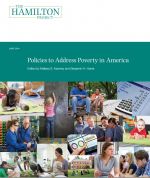
This proposal is chapter three of The Hamilton Project’s Policies to Address Poverty in America, and a segment in Promoting Early Childhood Development.
Introduction
Children born to young, unmarried mothers in the United States face an elevated risk of poverty. More than half of births last year to women under the age of thirty were outside of marriage. In 2012, single mothers headed nearly 25 percent of families, compared to 13 percent in 1970 (U.S. Census Bureau 2012). In that same year, 47 percent of children living in single-mother families lived below the federal poverty level, more than four times the 11 percent poverty rate for children living with their married parents (U.S. Census Bureau 2013). Children of single mothers fare less well in school and in life than children of married parents (see McLanahan and Sandefur 1994; Waldfogel, Craigie, and Brooks-Gunn 2010). For these reasons, addressing the situation into which children are born needs to be a key component in our nation’s fight against poverty.
Most single mothers claim that their pregnancy was unwanted or mistimed. Because births to unmarried mothers are largely unintended births, we believe that the most realistic approach to slowing the growth of single-parent families is to help women delay childbearing until both parents are ready to raise a child and prepared to make a long-term commitment to the other parent. Doing so will improve child well-being and reduce child poverty rates.
To that end, we propose a social marketing campaign designed to improve knowledge and attitudes about ways to prevent unintended pregnancies so that women can make better-informed decisions. Specifically, we propose that the U.S. Department of Health and Human Services’ Office of Population Affairs (OPA) use Title X monies to fund states for the purpose of launching a social marketing campaign to educate women about the safety, effectiveness, and convenience of long-acting reversible contraceptives, or LARCs. These state-run campaigns would target the population of women most vulnerable to births outside of marriage: low-income women between the ages of fifteen and thirty.


